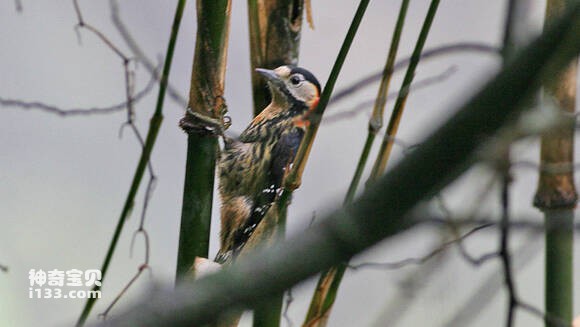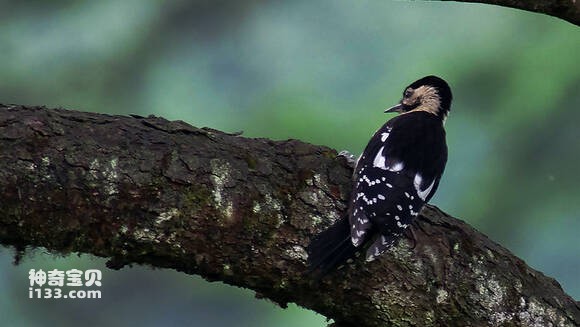Dryobates cathpharius
IUCN
LCBasic Information
Scientific classification
- name:Dryobates cathpharius
- Scientific Name:Dryobates cathpharius,Dendrocopos cathpharius,Crimson-breasted Woodpecker
- Outline:Climbing birds
- Family:
Vital signs
- length:16-18cm
- Weight:30-45g
- lifetime:No textual research information is available
Feature
Distribution and Habitat
The species is found in southern Tibet, western and northwestern Yunnan, southern Gansu, northern, central, northeastern and southwestern Sichuan, southern Shaanxi and southwestern Hubei. Outside China, it is found in Bhutan, India, Laos, Myanmar, Nepal, Thailand, and Vietnam.
It mainly inhabits in the mountain evergreen or deciduous castrated forests and mixed coniferous broad-leaved forests at altitudes of 1500-3500 meters, and sometimes occurs in coniferous forests and secondary forests on forest margins.
Appearance
The male bird has black upper body; Forehead stain white or light tea yellow; The face and eyes are brownish white or dirty white, the ear coverings, the side of the neck are dirty white, brown or tea yellow, and the feather ends are decorated with red, especially the ear coverings, and the deep red pillow crown is connected to one body. The back of the head and the pillow are also dark red, while the rest of the head and upper body are black. The wings are black brown, with white spots, and the wings form transversal spots when folded. The large inner and middle coverts of the wings have broad white ends or are all white, forming large white spots on the wings. The tail feathers are black, and the outer two pairs of tail feathers have tea yellow stripes. A broad black jaw line divides backward from the base of the mouth into two branches, one connected with the black back, one connected with the black chest side along the side of the throat; Chin, throat stain white or dark tea yellow
Details
The red-breasted Woodpecker has six subspecies: Dryobates cathpharius, Dendrocopos cathpharius, and Crimson-breasted Woodpecker。

The red-breasted woodpecker is a resident bird, which is usually active alone except during the breeding period. It feeds mainly on various insects. Prey with the mouth to hit the trunk, issued a "Tuk, tuk" sound, if found somewhere in the trunk of the worm, tightly cling to the tree, the head and mouth and the trunk is almost vertical, the first bark peck, the pest with the tongue one by one hook out to eat, the eggs with mucus sticky out. When encountering insects hiding in the deep channel of the trunk, the mouth knocks at the channel, issuing a specific drumming sound that scares the pests, so that the pests escape from the hole under the stimulation of the sound wave and eat it. It is generally necessary to completely eliminate the small cysticercus of the entire tree before transferring it to another tree.

The breeding season is April to May, nesting in broad-leaved forests and mixed forests above 1200 m. Nest holes are mostly chosen on dead trees or living trees, and the nest holes are pecked by male and female birds, and the holes are mostly oval. Each litter lays 2-4 eggs. Oval white, 19.5-25×15-18 mm in size. The male and female incubate the eggs in turn. Young birds are late sex.
The red-pecked woodpecker is a common species with a small population in China
。

It was included in the List of Beneficial Terrestrial Wildlife under State Protection or of Important economic and scientific research Value issued by the State Forestry Administration of China on August 1, 2000.
Listed on the IUCN Red List of Threatened Species (IUCN 2016 ver 3.1) - Not Threatened (LC).
Protect wild animals and eliminate wild meat.
Maintaining ecological balance is everyone's responsibility!








